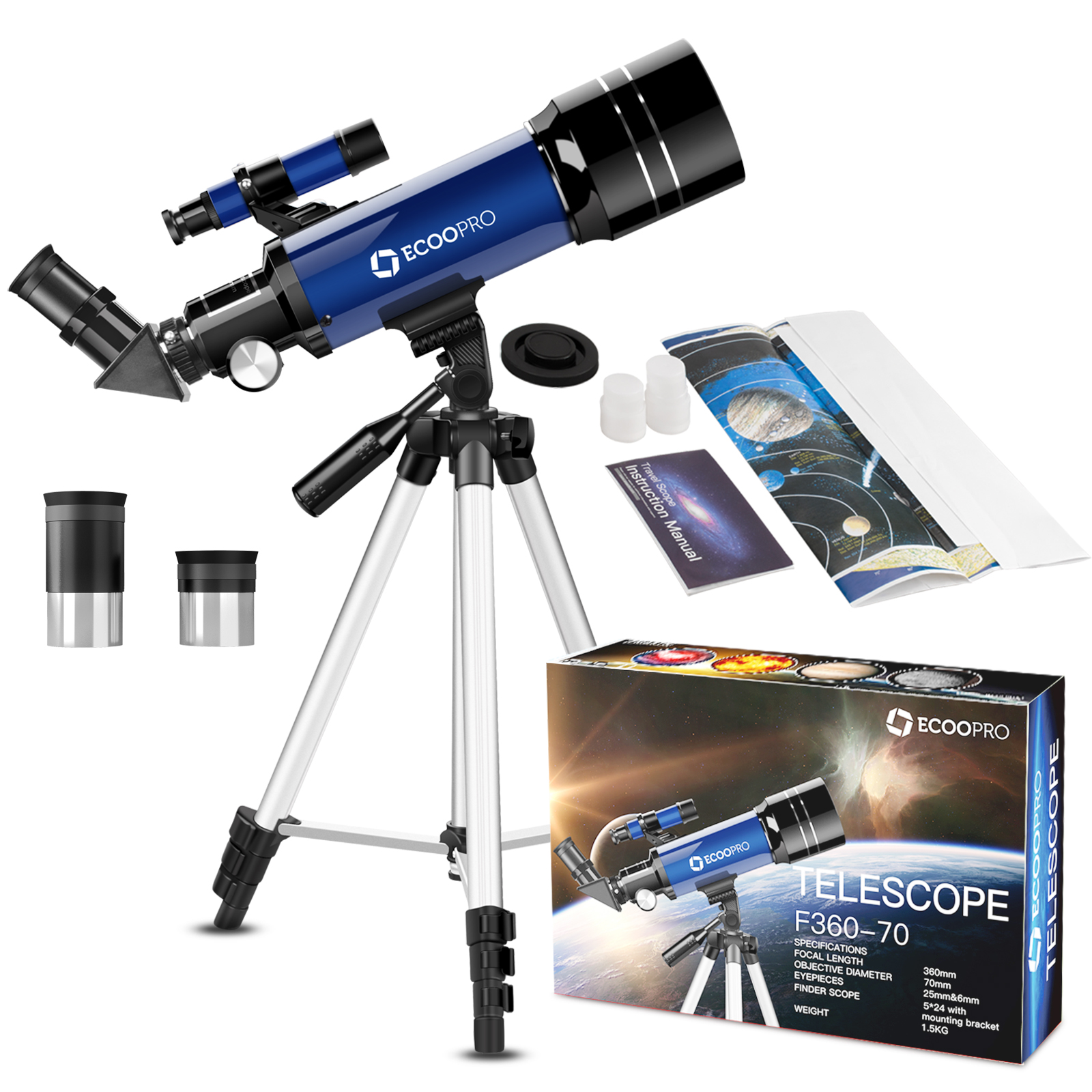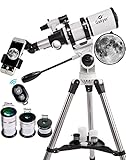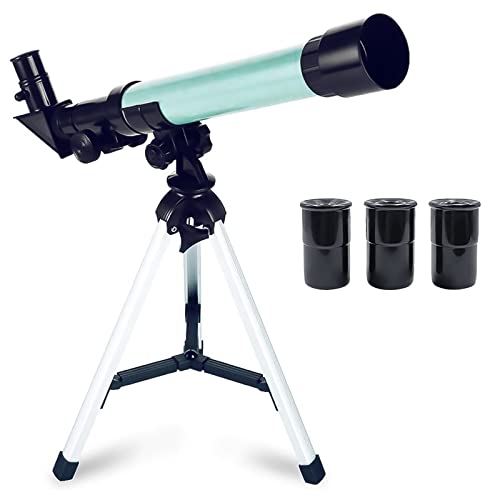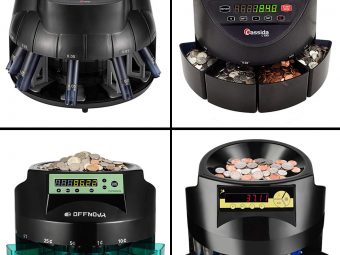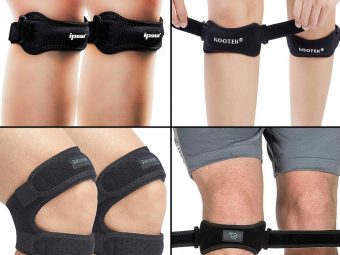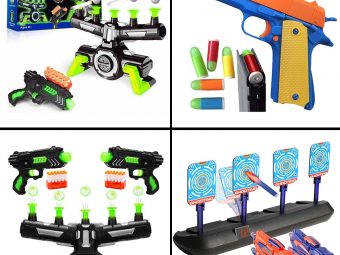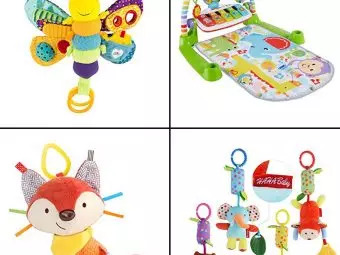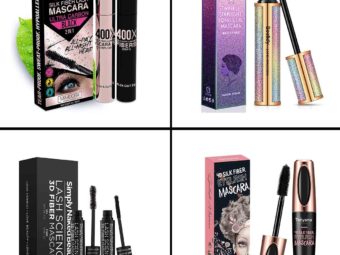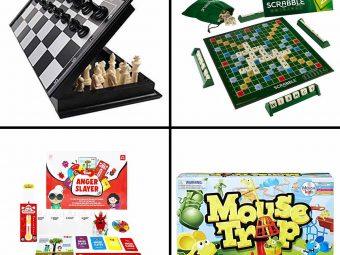
Image: MomJunction Design Team
The bright stars, moving celestial objects, clear sky, and far-away planets make a beautiful starry night. But, you can only see them like a dot from the earth, especially when the sky is polluted with artificial lights. You need the best first-telescope for beginners to observe different distant objects clearly. It brings objects closer to your eye, and the right accessories help capture the images seen through your telescope. Beginner-friendly telescopes are easy to use and have various exciting features to help you in your stargazing endeavors. Keep reading this post to learn about the best starter telescopes in detail.
Types Of Telescopes
Here are the two types of telescopes: refractor and reflector telescope.
- Refractor telescope: A refractor telescope uses a lens to focus and gather light. It requires less maintenance as the tube is closed and doesn’t attract much dust or dew. These telescopes are small and mainly used by amateurs.
- Reflector telescope: A reflector telescope uses a mirror to focus and gather light. Professionals mainly use these telescopes. However, they need a little maintenance as the tubes of the telescopes are open and attract dust and dew.
Top Picks
11 Best First-Telescopes
1. Best With Smartphone Adapter: MaxUSee Telescope For Kids & Astronomy Beginners
Experience sharper image quality with four eyepieces included in this MaxUSee telescope. It comes with a magnification of 16X to 200X. For precise and quick image visibility, you can use a 5X24 mm finder scope. The tripod provided with this kit helps focus on the image with stability. It includes accessories like a 3X Barlow lens, 1.5X erecting eyepiece, and a moon mirror for correct angle view and posture capture. This telescope also features a smartphone adapter to hold your smartphone close to the lens and capture the image. One of the best telescopes for beginners, you can click this video to understand the product better.
Specifications
- Aperture/Lens diameter: 70mm
- Focus: Manual
- Focal length: 400mm
Pros
- Portable
- Easy to set up
- Multi-coated lens
- Lightweight
Cons
- Tripod may not be adjustable
2. Best For Day And Night: Ecoopro Telescope For Kids
Let your child explore nature with the Ecoopro telescope for kids, one of the best beginner telescopes. It comes with two interchangeable eyepieces with a magnification of 51X to 128X. The telescope has a fully coated optical glass design that ensures a bright and clear image. You can use this refractor telescope to see the moon, planets, and celestial objects. The finderscope with a bracket design feature ensures it is positioned accurately for a clear view. Take a look at this video for more information.
Specifications
- Aperture/Lens diameter: 70mm
- Focus: Manual
- Focal length: 360mm
Pros
- Easy to use
- Suitable for viewing wildlife and scenery
- No-tool installation
- Adjustable tripod
Cons
- May be flimsy
 Quick tip
Quick tip3. Best Finder Scope: Emarth Portable Telescope
Emarth’s telescope has a fully coated lens for a clear and stunning image view with enhanced clarity and brightness. It is equipped with a 5X24 finder scope with a bracket for a faster view of the objects. You can enjoy bird watching, scenery, and mountains with the two eyepieces: K10mm and K25mm. The 3X Barlow lens ensures increased view power, and the adjustable tripod design allows different position views. Click here to see this telescope for beginners in detail.
Specifications
- Aperture/Lens diameter: 70 mm
- Focus: Manual
- Focal length: 360mm
Pros
- Lightweight
- Adjustable tripod
- Anti-slip legs
- Easy to setup
Cons
- May not be very stable
4. Best Aperture: Gskyer Refractor Telescope
Stimulate your child’s curiosity by giving them the Gskyer telescope that helps view the distant wildlife, planets, and stars closer. This telescope comes with three eyepieces: 5mm, 10mm, and 25mm, allowing the magnification of 16X, 40X, and 80X. You can also achieve optimum magnification with a 3X Barlow lens for a clear view. It also features coated optical lens with an anti-reflective blue film for a crisp and clear view. Moreover, the tripod is made of stainless steel, ensuring durability and stability.
Specifications
- Aperture/Lens diameter: 80mm
- Focus: Manual
- Focal length: 400mm
Pros
- Aluminum alloy tube
- Erecting zenith mirror
- Stretchable tripod
- Dovetail tail plate for better security
Cons
- May not have assembly instructions
 Quick tip
Quick tip5. Best Wireless Remote: Kiosesi Telescope For Kids And Adults
The telescope offers a high magnification from 20X to 200X with H6mm and H20mm eyepieces. Its 3X Barlow lens can offer a clear view of celestial objects and ground objects during the day and night. In addition, this telescope also comes with a moon filter for a clear view of the lunar surface, reducing the brightness of moonlight. A phone adapter and remote control are additional features in this telescope, allowing you to capture celestial images on your phone easily.
Specifications
- Aperture/Lens diameter: 70mm
- Focus: Manual
- Focal length: 400mm
Pros
- High-quality optical lens for clarity
- Adjustable tripod
- Multi-angle viewing
- Easy to install
Cons
- May be flimsy
6. Best Travel-Friendly: Solomark Portable Telescope
Solomark’s portable telescope has two eyepieces, K9mm and K20mm, offering 20X and 44X magnification. A 5X24 finder scope with a mounting bracket ensures the easy location of the images. You can effectively capture the images on your smartphone by attaching a 10mm smartphone eyepiece adapter to the telescope. Stargazers can carry this telescope in the specially designed backpack provided in the kit.
Specifications
- Aperture/Lens diameter: 70mm
- Focus: Manual
- Focal length: 400mm
Pros
- High-quality optics
- Lightweight
- Easy to set up
- Adjustable tripod
Cons
- May not be very stable
7. Best With Dust Cap: Educational Insights GeoSafari Vega Telescope
Explore planets, birds, and earth with the GeoSafari Vega telescope. It features two eyepieces offering magnification up to 67X. The 1.5X image-erecting eyepiece helps provide correct image orientation. Its diagonal mirror design ensures convenient viewing of the celestial and landscape objects. This telescope also has a dust cap and dew shield to protect the lens. A two-element coated glass lens prevents color distraction, enhancing the image clarity.
Specifications
- Aperture/Lens diameter: 50mm
- Focus: Manual
- Focal length: 360mm
Pros
- Lightweight
- Durable
- Sturdy tripod
- Easy to assemble
Cons
- May be difficult to focus
8. Best With Storage Bag: Zhumell Portable Refractor Telescope
Here is a refractor telescope by Zhumell with two eyepieces of 8mm and 20mm. It offers a precise view of the landscape and celestial objects during the day and night. The 3X Barlow lens enhances the image clarity, and a smartphone adapter assists in capturing the images. This telescope features an alt-azimuth mount for easy navigation. Its fully coated glass optics offers a great view of planets, scenery, and other objects. Suitable for beginners, its storage bag allows you to carry it to backyard views, hikes, and campaigns.
Specifications
- Aperture/Lens diameter: 50mm
- Focus: Manual
- Focal length: 360mm
Pros
- Adjustable tripod
- Precision-crafted optics
- Enhanced image brightness
- Easy to assemble
Cons
- May be flimsy
 Do remember
Do remember9. Best Easy Assembly: ToyerBee Telescope For Kids
The telescope is equipped with an optical glass lens to provide brighter and clearer images. It includes three eyepieces offering magnification of 20X, 30X, and 40X. The diagonal mirror design ensures comfortable viewing, and an adjustable knob delivers a clear, sharp image. It has an adjustable tripod mount that maneuvers smoothly and helps position the telescope at the desired angle.
Specifications
- Aperture/Lens diameter: 60mm
- Focus: Manual
- Focal length: 170mm
Pros
- Easy to assembly
- Portable
- Lightweight
- Non-toxic material
Cons
- Tripod may not be stable
10. Best Design: Nature Bound Telescope For Kids
The telescope is designed specifically for children who are new to telescopes. It offers up to 18X magnification and delivers a clear view of birds, mountains, moon, celestial objects, or animals. Your little one can use this telescope during the day and night. The adjustable knob and dual eyepiece design offer a convenient view for kids. Its adjustable tripod with a maneuvering mount allows you to position the telescope at the right angle for a clear view. It is one of the best first telescopes for your children who are curious to explore the world around them.
Specifications
- Aperture/Lens diameter: 50mm
- Focus: Manual
- Focal length: 15mm
Pros
- Suitable for indoor and outdoor use
- Adjustable tripod
- Soft eyepiece
- Can be used as a handheld telescope
Cons
- Might be difficult to focus
11. Best Anti-Reflective Coated Glass: FMG Portable Refractor Telescope
The compact telescope offers a high magnification ranging from 16X to 200X with three interchangeable eyepieces: H6mm, H12.5mm, and H20mm. It also features a 3X Barlow lens and 1.5X erecting eyepiece for a clear image view with sharp detail. A 5X24 finderscope ensures quicker delivery of the image with a precise view. This telescope is suitable for bird viewing, astrophotography, scenery view, and viewing celestial objects.
Specifications
- Aperture/Lens diameter: 70mm
- Focus: Manual
- Focal length: 300mm
Pros
- Multi-angle adjustable tripod
- Lightweight
- Easy maintenance
- Convenient to store
Cons
- Moon filter may not be promising
How To Choose The Right First Telescope?
Here are the key factors to consider when buying the best telescopes for beginners.
- Purpose: Before looking for the telescope, first decide the reason for which you need a telescope. A refractor telescope is ideal if you are a beginner, while reflector telescopes are generally for professionals seeking detailed images. Choose a telescope that allows you to view celestial and terrestrial objects easily.
- Mount: A telescope mount helps to keep it stable or positioned in the desired angle view. Alt-azimuth mounts come with easy maneuvers allowing 360° movement, while an equatorial mount aligns with the earth’s rotational axis. It allows you to track the moving celestial objects without missing the focus. Choose one according to your needs.
- Magnification: Magnification and aperture go hand in hand. These features depend on each other to obtain a clear, bright, and detailed image. A telescope with a low aperture and great magnification results in blurred images with no detailing as it cannot collect enough light. So, select a telescope that provides a good aperture and magnification. However, magnification exceeding 200 will not be helpful for beginners.
- Eyepieces: Choose a telescope with high-quality and soft eyepieces for comfortable viewing and enhanced clarity and brightness.
- Portability: Select a lightweight telescope that is easy to carry and sets up in minimum time. When the telescope consumes too much time to get assembled, there are chances that you might be demotivated and stop using it. So, beginners can opt for a telescope that is small and portable.
Why Trust Momjunction?
Wedetso Chirhah, our in-house writer and editor, is interested in gadgets, household items, and children’s products and enjoys creating comprehensive research-based articles for his readers. He browses various online platforms and compares different products to find the best ones. The beginner telescopes listed here have been curated after thorough research of the telescopes on various e-commerce sites by understanding their benefits and specifications. Wedetso has also provided a detailed buying guide for the readers to help them make an informed choice.
Frequently Asked Questions
1. How do I maintain a telescope?
Dust and dew are two main concerns when maintaining a telescope. Dust on glass results in unclear images. So, it’s essential to store your telescope in dry places where it doesn’t end up catching dew and stays dust-free. You can use a squeeze ball blower to eliminate the dust from the lens. You can also use diluted isopropyl alcohol to clean the lens. However, remember that dusty glass is far better than a scratched one. So, be gentle while cleaning the glass. Always cover the focus finder and lens with a dust cap or plastic cover when the telescope is not in use.
2. What is the most powerful telescope for home use?
Whether you are using it for stargazing or bird watching, often a telescope is termed powerful when it has great magnification, focal length, and aperture. Besides these features, your telescope is said to be powerful depending on how much light it can see without causing any color distraction.
3. How do I travel with a telescope?
If you plan to take your telescope outdoors or by plane, pack it carefully. You need to be gentle while storing it in the right bag. Store the scope in a padded bag to prevent impact. Keep all the accessories and main attachments in the same storage bag to avoid missing the parts.
If you want to discover birds and scenery, enjoy stargazing, or explore celestial objects, you need great magnification for bright and sharp images. So, choosing the best first-telescope would be of great help. The telescopes listed above offer great convenience and clear image viewing. They have features like the smartphone adapter, which allows you to capture images of celestial or terrestrial objects on your phone. However, avoid telescopes with a flimsy tripod or finder scope as you need optimal stability and focus to view the objects properly.



